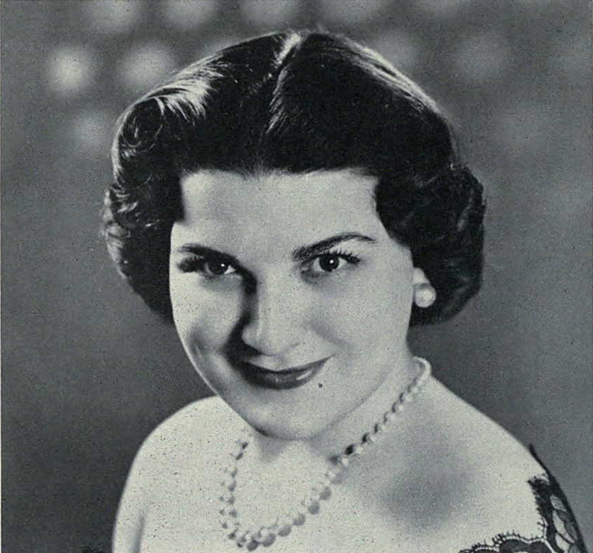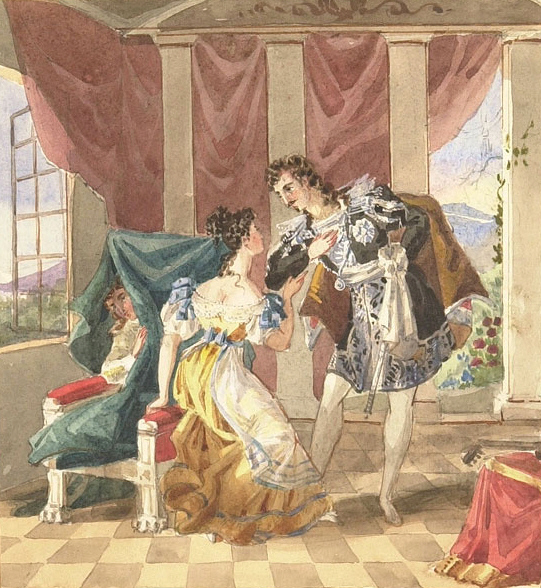|
André Jouve
André Jouve, born 1929, died 2 March 2019 was a French conductor and radio producer, active mainly in France, who left a number of recordings and was for many years associated with classical music on French Radio.André Jouve - Ils nous ont quittés. '' Diapason'', May 2019, No 679, p17. Life and career Jouve studied at the Conservatoire de Paris, and took a keen interest in baroque music in the 1950s, and notably recorded Charpentier's Messe de minuit with the Ensemble vocal de Paris, which won a Grand Prix du disque in 1954. He conducted in Paris and Stuttgart including the Orchestre de la Société des Concerts du Conservatoire. Jouve was the chorus director for the 1952 Aix-en Provence festival production of ''Iphigénie en Tauride'', conducted by Carlo Maria Giulini, later recorded for Vox Records. [...More Info...] [...Related Items...] OR: [Wikipedia] [Google] [Baidu] |
Conductor (music)
Conducting is the art of directing a musical performance, such as an orchestral or choral concert. It has been defined as "the art of directing the simultaneous performance of several players or singers by the use of gesture." The primary duties of the conductor are to interpret the score in a way which reflects the specific indications in that score, set the tempo, ensure correct entries by ensemble members, and "shape" the phrasing where appropriate. Conductors communicate with their musicians primarily through hand gestures, usually with the aid of a baton, and may use other gestures or signals such as eye contact. A conductor usually supplements their direction with verbal instructions to their musicians in rehearsal. The conductor typically stands on a raised podium with a large music stand for the full score, which contains the musical notation for all the instruments or voices. Since the mid-19th century, most conductors have not played an instrument when conducting, al ... [...More Info...] [...Related Items...] OR: [Wikipedia] [Google] [Baidu] |
Pierrette Alarie
Pierrette Alarie, (November 9, 1921 – July 10, 2011) was a French Canadian coloratura soprano. She was married to the French-Canadian tenor Léopold Simoneau. Life and career Born in Montreal, Quebec, Alarie was the daughter of a choirmaster, assistant conductor of the ''Société Canadienne d'opérettes'', and of a soprano and actress. She studied voice and acting early and performed on radio from the age of 9, first as an actress and later as a singer of popular music. While studying voice with Victor Issaurel, she made her debut in 1938 at ''Les Variétés lyriques'' in the operetta '' The White Horse Inn''. She also sang Marie in ''La fille du régiment'' and the lead role in '' Mireille''. On a scholarship she went to the Curtis Institute of Music in Philadelphia to complete her studies with Elisabeth Schumann. Alarie won the ''Metropolitan Opera Auditions of the Air'' and made her Metropolitan Opera debut on December 8, 1945, as Oscar in ''Un ballo in maschera'' unde ... [...More Info...] [...Related Items...] OR: [Wikipedia] [Google] [Baidu] |
Jean-Féry Rebel
Jean-Féry Rebel (18 April 1666 – 2 January 1747) was an innovative French Baroque composer and violinist. Biography Rebel, a child violin prodigy, was the most famous offspring of Jean Rebel, a tenor in Louis XIV's private chapel. He later became a student of the great violinist, singer, conductor, and composer Jean-Baptiste Lully. By 1699, at age 33, Rebel became first violinist of the Académie royale de musique (also known as the Opéra). He travelled to Spain in 1700. Upon his return to France in 1705, he was given a place in the prestigious ensemble known as the Les Vingt-quatre Violons du Roi. He was chosen Maître de Musique in 1716. His most important position at court was Chamber Composer, receiving the title in 1726. Rebel served as court composer to Louis XIV and ''maître de musique'' at the Académie, and directed the Concert Spirituel (during the 1734–1735 season). Rebel was one of the first French musicians to compose sonatas in the Italian style. Many o ... [...More Info...] [...Related Items...] OR: [Wikipedia] [Google] [Baidu] |
Teresa Stich-Randall
Teresa Stich-Randall ( Stich; 24 December 1927 17 July 2007) was a European-based American soprano opera singer. [...More Info...] [...Related Items...] OR: [Wikipedia] [Google] [Baidu] |
Il Re Pastore
' (''The Shepherd King'') is an opera, K. 208, written by Wolfgang Amadeus Mozart to an Italian libretto by Metastasio, edited by Giambattista Varesco. It is an opera seria. The opera was first performed on 23 April 1775 in Salzburg in the Rittersaal (knight's hall) of the Residenz-Theater in the palace of the Archbishop Count Hieronymus von Colloredo. In 1775 the opera was commissioned for a visit by the Archduke Maximilian Francis of Austria, the youngest son of Empress Maria Theresa, to Salzburg. Mozart spent six weeks working on the opera. It consists of two acts and runs for approximately 107 minutes. Metastasio wrote the libretto in 1751, basing it on a work by Torquato Tasso called ''Aminta''. The libretto was picked up when Mozart (just 19 at the time) and his father saw a performance of it set to music composed by Felice Giardini – Mozart's version, however was two acts rather than Giardini's three, and has a few substantial changes. Each act lasts for around ... [...More Info...] [...Related Items...] OR: [Wikipedia] [Google] [Baidu] |
Die Entführung Aus Dem Serail
' () ( K. 384; ''The Abduction from the Seraglio''; also known as ') is a singspiel in three acts by Wolfgang Amadeus Mozart. The German libretto is by Gottlieb Stephanie, based on Christoph Friedrich Bretzner's ''Belmont und Constanze, oder Die Entführung aus dem Serail''. The plot concerns the attempt of the hero Belmonte, assisted by his servant Pedrillo, to rescue his beloved Constanze from the seraglio of Pasha Selim. The work premiered on 16 July 1782 at the Vienna Burgtheater, with the composer conducting. Origins The company that first sponsored the opera was the ''Nationalsingspiel'' ("national Singspiel"), a pet project (1778–1783) of the Austrian emperor Joseph II. The Emperor had set up the company to perform works in the German language (as opposed to the Italian opera style widely popular in Vienna). This project was ultimately given up as a failure, but along the way it produced a number of successes, mostly a series of translated works. Mozart's opera emer ... [...More Info...] [...Related Items...] OR: [Wikipedia] [Google] [Baidu] |
Popoli Di Tessaglia!
"" ( K. 316/300b) is a recitative and aria for soprano and orchestra that Wolfgang Amadeus Mozart wrote for Aloysia Weber. It is famous for including two occurrences of a G6, i.e. the G above high C, or 1568 Hz by modern concert pitch – according to the ''Guinness Book of Records'', the highest musical note ever scored for the human voice. (However, an A6 is scored in Ignaz Umlauf's ''Das Irrlicht'', also sung by Aloysia Weber.) History Mozart completed this recitative and aria in Munich on 8 January 1779, as an insertion aria for the opera '' Alceste'' by Christoph Willibald Gluck. It was written specifically to showcase the superlative vocal skills of Mozart's future sister-in-law, Aloysia Weber, who was only 18 at the time. However, sopranos who are able to cope with the aria's demands have been few and far between, and hence the aria is usually omitted from performances of ''Alceste''. It has been therefore redesignated a concert aria, to be presented in concert ... [...More Info...] [...Related Items...] OR: [Wikipedia] [Google] [Baidu] |
Le Nozze Di Figaro
''The Marriage of Figaro'' ( it, Le nozze di Figaro, links=no, ), K. 492, is a ''commedia per musica'' (opera buffa) in four acts composed in 1786 by Wolfgang Amadeus Mozart, with an Italian libretto written by Lorenzo Da Ponte. It premiered at the Burgtheater in Vienna on 1 May 1786. The opera's libretto is based on the 1784 stage comedy by Pierre Beaumarchais, ''La folle journée, ou le Mariage de Figaro'' ("The Mad Day, or The Marriage of Figaro"). It tells how the servants Figaro and Susanna succeed in getting married, foiling the efforts of their philandering employer Count Almaviva to seduce Susanna and teaching him a lesson in fidelity. Considered one of the greatest operas ever written, it is a cornerstone of the repertoire and appears consistently among the top ten in the Operabase list of most frequently performed operas. In 2017, BBC News Magazine asked 172 opera singers to vote for the best operas ever written. ''The Marriage of Figaro'' came in first out of ... [...More Info...] [...Related Items...] OR: [Wikipedia] [Google] [Baidu] |
Exultate Jubilate
' (Exult, rejoice), K. 165, is a 1773 motet by Wolfgang Amadeus Mozart. History This religious solo motet was composed when Mozart was staying in Milan during the production of his opera ''Lucio Silla'' which was being performed there in the Teatro Regio Ducale. It was written for the castrato Venanzio Rauzzini, who had sung the part of the '' primo uomo'' Cecilio in ''Lucio Silla'' the previous year. While waiting for the end of the run (from 26 December 1772 to 25 January 1773), Mozart composed the motet for his singer, whose technical excellence he admired. Its first performance took place at the Theatine Church on 17 January 1773, while Rauzzini was still singing in Mozart's opera at night. Mozart made some revisions around 1780. On 30 May 1779, a Trinity Sunday, a revised version was performed by Francesco Ceccarelli at the Holy Trinity Church, Salzburg. Another revised version was intended for Christmas. The manuscripts of the two Salzburg versions were discovered in 197 ... [...More Info...] [...Related Items...] OR: [Wikipedia] [Google] [Baidu] |
Die Zauberflöte
''The Magic Flute'' (German: , ), K. 620, is an opera in two acts by Wolfgang Amadeus Mozart to a German libretto by Emanuel Schikaneder. The work is in the form of a '' Singspiel'', a popular form during the time it was written that included both singing and spoken dialogue. The work premiered on 30 September 1791 at Schikaneder's theatre, the Freihaus-Theater auf der Wieden in Vienna, just two months before the composer's premature death. Still a staple of the opera repertory, its popularity was reflected by two immediate sequels, Peter Winter's '' Das Labyrinth oder Der Kampf mit den Elementen. Der Zauberflöte zweyter Theil'' (1798) and a fragmentary libretto by Johann Wolfgang von Goethe titled '' The Magic Flute Part Two''. The allegorical plot was influenced by Schikaneder and Mozart's interest in Freemasonry and concerns the initiation of Prince Tamino. Enlisted by the Queen of the Night to rescue her daughter Pamina from the high priest Sarastro, Tamino comes ... [...More Info...] [...Related Items...] OR: [Wikipedia] [Google] [Baidu] |
André Hossein
André Hossein, born Aminulla Huseynov, also known as Aminollah Hossein ( fa, امینالله حسین; russian: Аминулла Гусейнов 1905, in Samarkand – 9 August 1983, in Paris) was a French composer of Persian or Azerbaijani origin and a tar soloist. Hossein was the first Persian composer who was able to present his works in international concerts. Life and education His son, Robert Hossein, has written that André Hossein studied in Moscow, Russia and later in Germany where he attended a music academy in Stuttgart and the Berlin Conservatory from 1934 to 1937. His fascination with ancient Persia led him to convert to Zoroastrianism. His newfound religion immensely influenced his musical works such as "Persian Miniature", "I love my Country", and "Symphony Persepolis". He married Anna Mincovschi, a Jewish comedy actress from Soroca (Bessarabia), who had immigrated to Paris with her parents after the October Revolution. [...More Info...] [...Related Items...] OR: [Wikipedia] [Google] [Baidu] |




